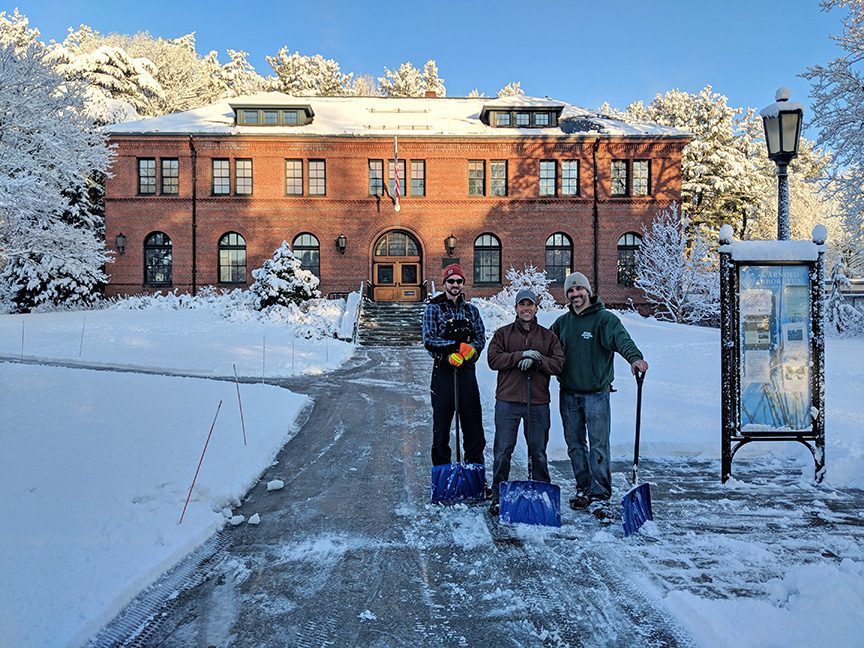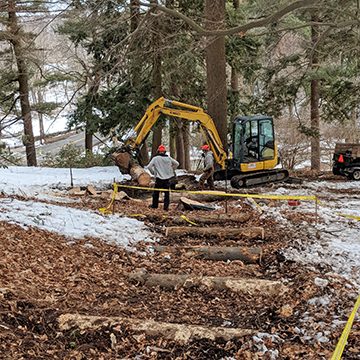As beautiful autumn days filled with bright sunshine and colorful leaves rapidly come to a close, the Arboretum horticulture crew works hard throughout November to prepare for winter.

It’s easy to imagine the Arboretum’s large landscape that is filled with trees, shrubs, and vines makes for many leaves falling and covering the ground at this time of year. Leaves contain valuable nutrients, and utilizing them to support the health of our woody plants is important. In some forest-like areas of the Arboretum, we “leave the leaves” to naturally decompose and nurture the soil. In other areas, they are mulched to cut them into tiny pieces that can break down quickly, protecting the underlying grass and supporting the turf. In areas where special care is taken to conserve lawns and green space, excess leaves are removed, composted, then added back into our planting beds. Nearly everything collected from the Arboretum grounds is reused and repurposed whenever possible.
November is also a good time to scout for insect pests, when bare branches make pest issues easier to spot. Traps to catch destructive insects like the winter moth are set up this month. Inspecting plants for egg masses is underway, as well as monitoring population levels of pests such as the gypsy moth and viburnum leaf beetle. We are also looking for signs of potential threats like the spotted lanternfly—a harmful invasive species making its way to New England.
Things don’t really slow down in winter months for our horticulture staff. While the landscape can be a peaceful, winter wonderland, it also requires ongoing maintenance of plants impacted by winter storms and frigid temperatures. During these chilly months, more mulching, pruning, and winter projects prevail.

Once the leaves have fallen, the branching structure of our trees is revealed, creating the perfect opportunity to prune for healthy and strong branch configuration. Some trees, such as crabapples (Malus spp.) and hawthorns (Crataegus spp.) in the rose family, are particularly labor-intensive, making winter a perfect time for pruning. Woody material removed from our trees and shrubs is chipped and reapplied as mulch to planting areas in the landscape.
Frozen ground without snow offers an excellent chance to continue mulching, as heavier equipment can be driven onto the grounds without the worry of compacting the soil. This time of year, with the entire crew working together, a collection such as the Bradley Rosaceous Collection can be mulched quickly and efficiently, typically in two or three days instead of taking weeks during warmer seasons. Additionally, the miles of mulched paths offering visitor access throughout the landscape are replenished in winter.
Naturally, winter also brings snow clean-up, equipment maintenance, and staff safety trainings, as well as horticulture conferences. The Arboretum horticulture crew is on duty year round to maintain the living collection and Arboretum landscape. Spring is the time of planting and revitalizing the landscape; summer is the season of controlling weeds; fall the season of managing leaves—winter’s cold months provide a time of reflection and preparation.

